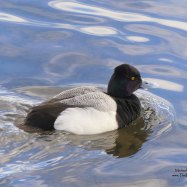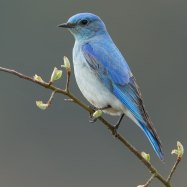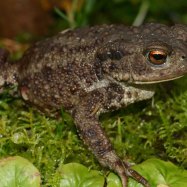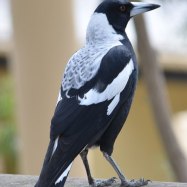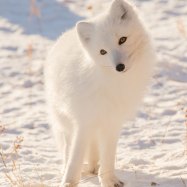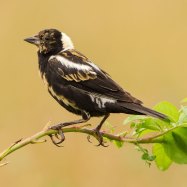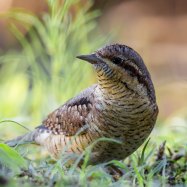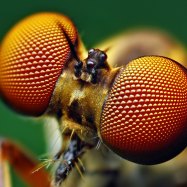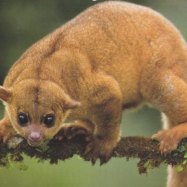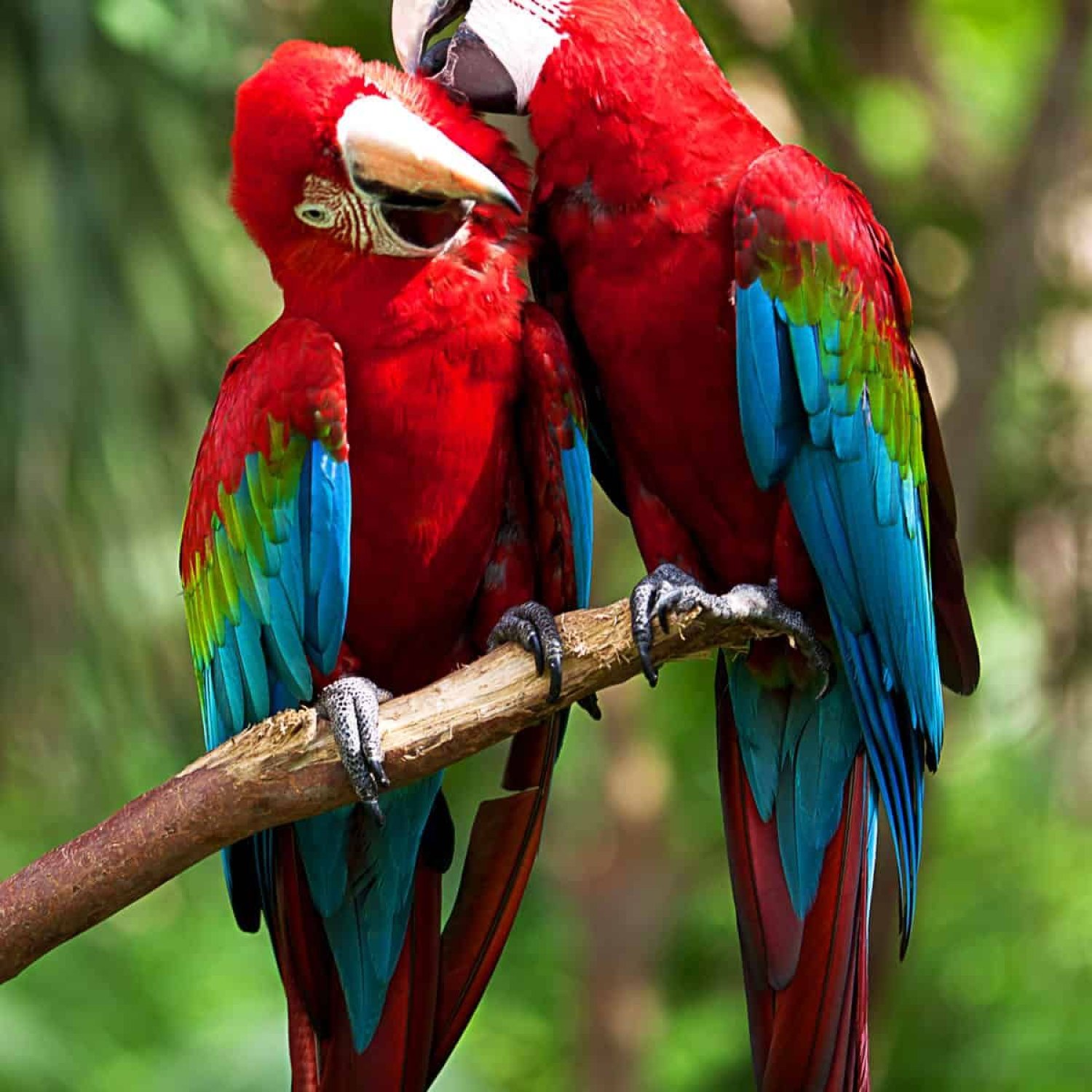
Scarlet Macaw
81 - 96 centimeters
The strikingly beautiful Scarlet Macaw is a large and robust bird found in the rainforests of Brazil, Peru, and Bolivia. With its vibrant colors and long tail, it is a popular pet among bird enthusiasts. Belonging to the Psittacidae family, it can grow up to 81-96 centimeters in length. Enjoy spotting this majestic creature in its natural habitat! #ScarletMacaw #RainforestBird #Wildlife
Animal Details Summary:
Common Name: Scarlet Macaw
Kingdom: Animalia
Habitat: Tropical rainforests, savannas, and mangrove swamps
The Majestic Scarlet Macaw: A Bird of Vibrant Colors
The rich vibrant colors of the scarlet macaw are a sight to behold. With hues of red, blue, green, and yellow, this beautiful bird is truly a masterpiece of nature. Its scientific name, Ara macao, is derived from the Brazilian word "macau" which means "beautiful feather." And truly, the scarlet macaw is indeed a stunning bird with its colorful plumage and large body shape Scarlet Macaw.In this article, we will delve into the fascinating world of the scarlet macaw and discover more about its habitat, behavior, and unique features.
Taxonomy
The scarlet macaw belongs to the Kingdom Animalia, Phylum Chordata, and Class Aves. It is part of the Psittaciformes order and Psittacidae family, which includes parrots, cockatoos, and lories. Psittacidae is known as the true parrot family, and the scarlet macaw is one of the largest species within this family.Habitat and Distribution
Scarlet macaws are found in tropical rainforests, savannas, and mangrove swamps in Central and South America. They have a vast geographical distribution, with their natural habitat spanning from Mexico to Bolivia. They are most commonly found in the rainforests of Brazil, Peru, and Bolivia.These birds prefer to live in the dense canopy of rainforests, where they can find plenty of fruits and nuts, which make up a significant part of their diet. They are also known to inhabit other types of forests with a variety of trees and vegetation Seagull.
Diet and Feeding Habits
Scarlet macaws are omnivorous, which means they eat both plants and animals. In the wild, the bulk of their diet consists of fruits, nuts, seeds, and berries. This is because fruits and nuts are rich in nutrients and provide them with energy. Some of their favorite fruits include papaya, mango, and palm nuts.Apart from vegetation, they also feed on insects, small birds, and their eggs. They have a strong beak with a sharp pointed tip, which they use to crack open hard shells and nuts. This beak is also helpful in catching and crushing insects.
Physical Characteristics
The scarlet macaw is a large and robust bird. It measures 81 to 96 centimeters in length and weighs between 900 to 1200 grams. It has a long, pointed tail, which helps it to maneuver through the dense forest canopy effortlessly. Its wingspan can reach up to 120 centimeters, enabling it to fly long distances.One of the most striking features of the scarlet macaw is its vibrant coloration. Its body is predominantly bright red, with patches of blue, green, and yellow on its wings and tail. These colors are not just for show; they serve as camouflage in the wild, helping the scarlet macaw blend into its surroundings and evade predators.
Behavior and Adaptations
The scarlet macaw is a highly social bird and is usually found in flocks of 10 to 30 individuals. Within these flocks, they form strong bonds and communicate with each other using loud calls and whistles. These calls can be heard from afar and serve as a way to locate and stay in contact with other flock members.To survive in the dense rainforest, scarlet macaws have developed unique adaptations. Their feet have two toes pointing forward and two pointing backward, which helps them to grasp onto branches and perch securely. This also allows them to climb and explore their surroundings, which is essential for foraging and finding shelter.
Threats and Conservation
The scarlet macaw is listed as "Least Concerned" on the International Union for Conservation of Nature (IUCN) Red List. However, they are still facing significant threats in the wild, such as the loss of their natural habitat due to deforestation and illegal pet trade.The destruction of rainforests has resulted in the decline of the scarlet macaw population, especially in countries like Brazil and Peru. These birds rely heavily on trees and vegetation for food and shelter, and with the continuous destruction of their habitat, their survival is at risk.
Efforts are being made to conserve and protect the scarlet macaw, such as creating protected areas and promoting sustainable practices. Conservation organizations and local communities are also working together to raise awareness and reduce the demand for these birds in the illegal pet trade.
In Captivity
Due to their striking beauty and intelligence, scarlet macaws are a popular choice for animal enthusiasts and collectors. However, these birds require a lot of space and specialized care, making them challenging to keep as pets. They are also social creatures and need a lot of interaction with their human caregivers to stay mentally and physically healthy in captivity.For people who wish to keep a scarlet macaw as a pet, it is essential to do thorough research and understand the responsibilities and care required to provide a suitable environment for these birds. It is also crucial to ensure that the macaw is obtained from reputable breeders or rescue organizations, and not from the illegal pet trade.
Role in Culture and Symbolism
Scarlet macaws have been a part of human society for centuries, and have been depicted in art, literature, and folklore. In some Central and South American cultures, these birds are seen as a symbol of power and beauty. They have also been used in rituals and ceremonies, representing strength and fertility.In modern culture, the scarlet macaw continues to be a popular subject in art and is a source of inspiration for fashion and design. Their vibrant colors and majestic presence have also made them a beloved character in movies and cartoons.
Conclusion
The scarlet macaw is a magnificent bird that captivates us with its vibrant colors and fascinating behavior. Its unique adaptations have allowed it to thrive in the dense rainforests of Central and South America, but it is facing threats in the wild due to human activities.As we continue to learn more about these beautiful birds, it is crucial to also take action to protect and preserve their natural habitat. The scarlet macaw is a remarkable creature that deserves to be admired and appreciated, not only for its stunning appearance but also for its vital role in maintaining a balanced ecosystem. Let us appreciate and protect the majestic scarlet macaw for generations to come.

Scarlet Macaw
Animal Details Scarlet Macaw - Scientific Name: Ara macao
- Category: Animals S
- Scientific Name: Ara macao
- Common Name: Scarlet Macaw
- Kingdom: Animalia
- Phylum: Chordata
- Class: Aves
- Order: Psittaciformes
- Family: Psittacidae
- Habitat: Tropical rainforests, savannas, and mangrove swamps
- Feeding Method: Omnivorous
- Geographical Distribution: Central and South America
- Country of Origin: Mexico, Central America, and South America
- Location: Rainforests of Brazil, Peru, and Bolivia
- Animal Coloration: Vibrant red, blue, green, and yellow
- Body Shape: Large and robust
- Length: 81 - 96 centimeters
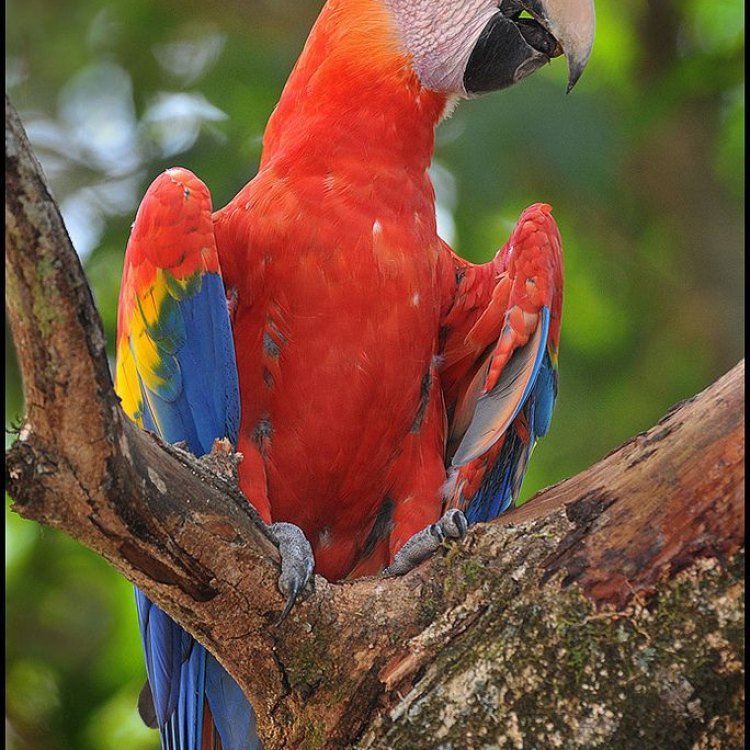
Scarlet Macaw
- Adult Size: Large
- Average Lifespan: 40 - 50 years
- Reproduction: Sexual
- Reproductive Behavior: Monogamous
- Sound or Call: Loud squawking and screeching
- Migration Pattern: Non-migratory
- Social Groups: Live in pairs or small flocks
- Behavior: Intelligent and curious
- Threats: Habitat loss, illegal pet trade, and hunting
- Conservation Status: Vulnerable
- Impact on Ecosystem: Seed dispersers for many tree species
- Human Use: Popular as pets and in the illegal bird trade
- Distinctive Features: Brightly colored plumage and large beaks
- Interesting Facts: Scarlet Macaws can mimic human speech and have a long lifespan in captivity
- Predator: Harpy Eagles, Jaguars, and Humans
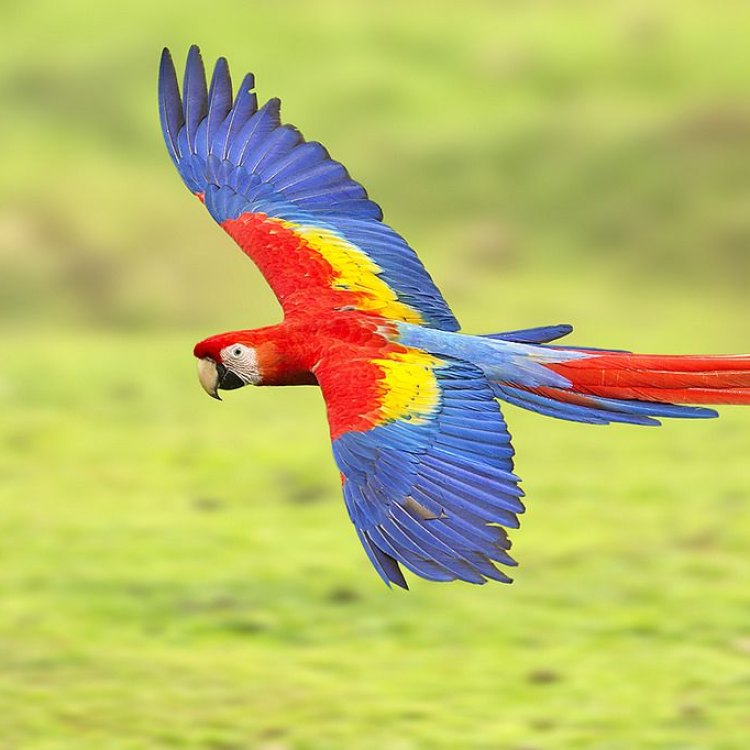
Ara macao
The Basics: Physical Description and Biology
The Scarlet Macaw is a large parrot species, with an average length of around 33 inches and a weight of 2 to 3 pounds. They are easily recognized by their vibrant red, blue, and yellow feathers, with touches of green and white. Their large beaks are perfectly designed for cracking open nuts and seeds, their primary source of food.These birds have an average lifespan of 40 to 50 years in the wild, with some individuals living up to 75 years in captivity PeaceOfAnimals.Com. They reach sexual maturity at around 3 to 4 years old and reproduce through sexual means, with a monogamous mating system. Scarlet Macaws are known for their loud squawking and screeching calls, which can often be heard from a distance.
Behavior and Social Groups
Scarlet Macaws are highly intelligent and curious creatures. In the wild, they live in pairs or small flocks, consisting of a dominant breeding pair and their offspring from previous years. They are also known to form strong social bonds, often seen preening and grooming each other.One of the most interesting behaviors of these birds is their ability to mimic human speech. While not as advanced as some other species, Scarlet Macaws can learn a few words and phrases, adding to their already charming personality.
Threats and Conservation Status
Despite their intelligence and beauty, Scarlet Macaws face numerous threats in their natural habitat. The primary threat to their existence is habitat loss due to deforestation and human development Skua. These birds also fall victim to illegal pet trade and hunting, as their colorful plumage is highly desired.According to the International Union for Conservation of Nature (IUCN), Scarlet Macaws are currently listed as Vulnerable on the Red List of Threatened Species. Conservation efforts, including protection of remaining forests and targeted reforestation projects, are crucial in ensuring the survival of these stunning birds.
The Scarlet Macaw's Impact on the Ecosystem
Aside from their aesthetic value, Scarlet Macaws play a significant role in their ecosystem. As seed dispersers, they help in the reproduction and growth of many tree species. They also aid in pollination by feeding on nectar and fruits from different plants.In addition, these birds are often considered an indicator species, meaning their presence and population levels reflect the overall health of their habitat. Their decline can indicate larger issues within the ecosystem, such as water and air pollution.
Human Use and Interesting Facts
Sadly, the Scarlet Macaw is not only coveted for its beauty in the wild. It is also a popular pet among bird enthusiasts. However, capturing these birds from the wild is not only illegal but also harmful to their populations. It is estimated that for every Scarlet Macaw sold in the illegal pet trade, three to four die during the capture and transportation process.Despite their striking appearance and popularity as pets, the Scarlet Macaw has some unique traits and abilities that make them even more intriguing. As mentioned earlier, they have the ability to mimic human speech, but they also have a long lifespan in captivity, living up to 75 years with proper care.
Predators of the Scarlet Macaw
Being at the top of the food chain, Scarlet Macaws have few natural predators. However, they are occasionally preyed upon by Harpy Eagles and Jaguars. Humans are the biggest threat to these birds, with deforestation and illegal hunting being major contributors to their declining population.In Conclusion
The Scarlet Macaw is a remarkable bird, full of vibrant colors and fascinating characteristics. From their intelligence and social behavior to their crucial role in the ecosystem, it's clear that these birds are much more than just a pretty face. Their uniqueness extends beyond their physical appearance and adds to the wonder and diversity of our planet's animal kingdom. As we continue to work towards their conservation and protection, we can only hope that future generations will have the privilege of admiring these magnificent creatures in their natural habitat.
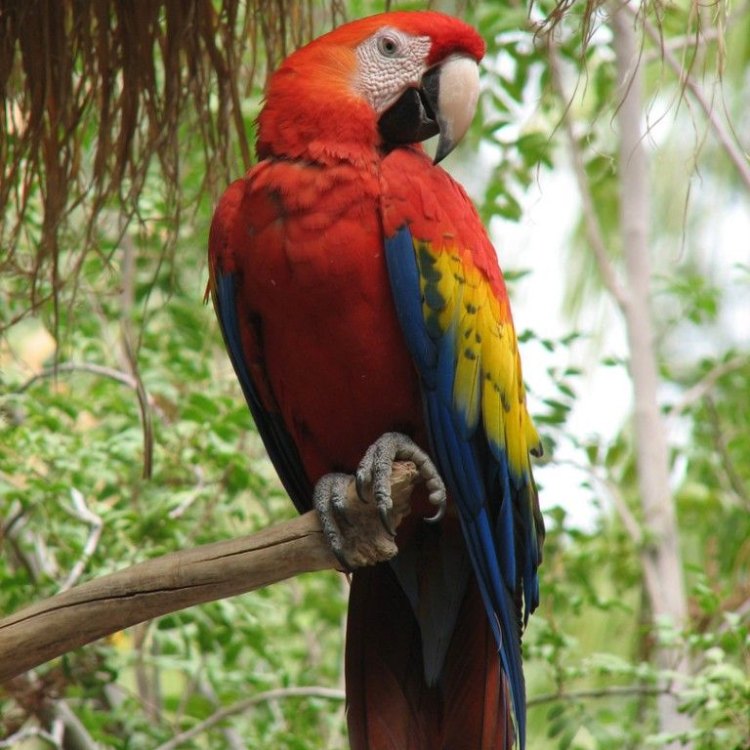
The Majestic Scarlet Macaw: A Bird of Vibrant Colors
Disclaimer: The content provided is for informational purposes only. We cannot guarantee the accuracy of the information on this page 100%. All information provided here may change without prior notice.

